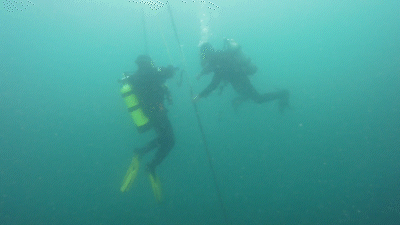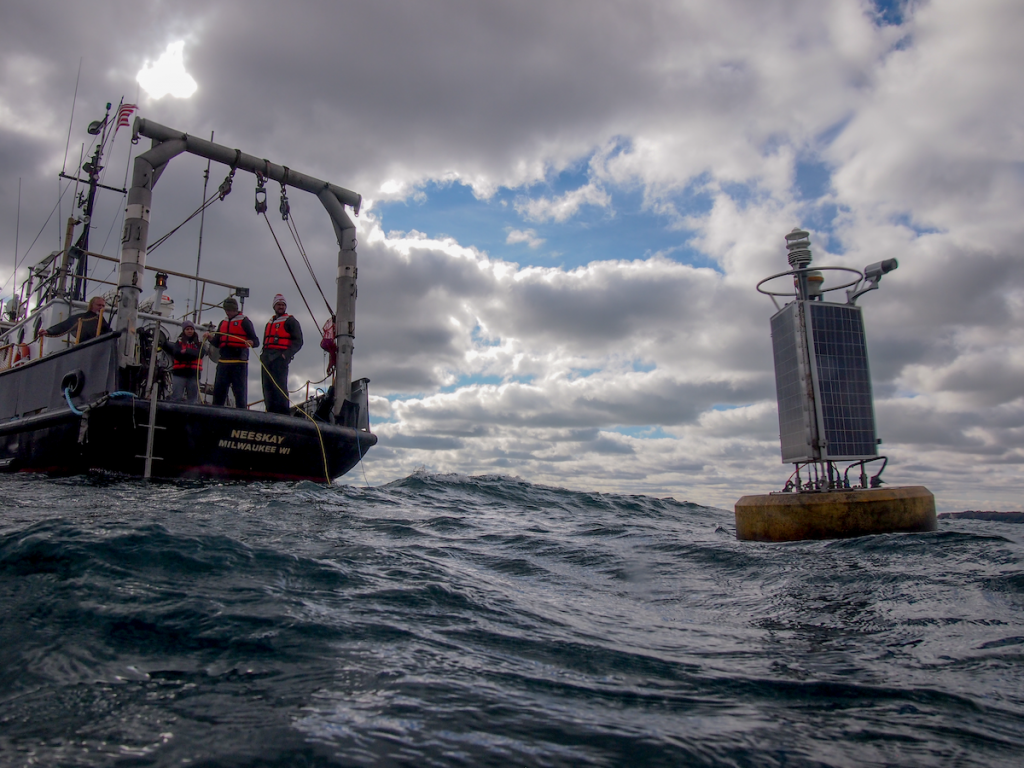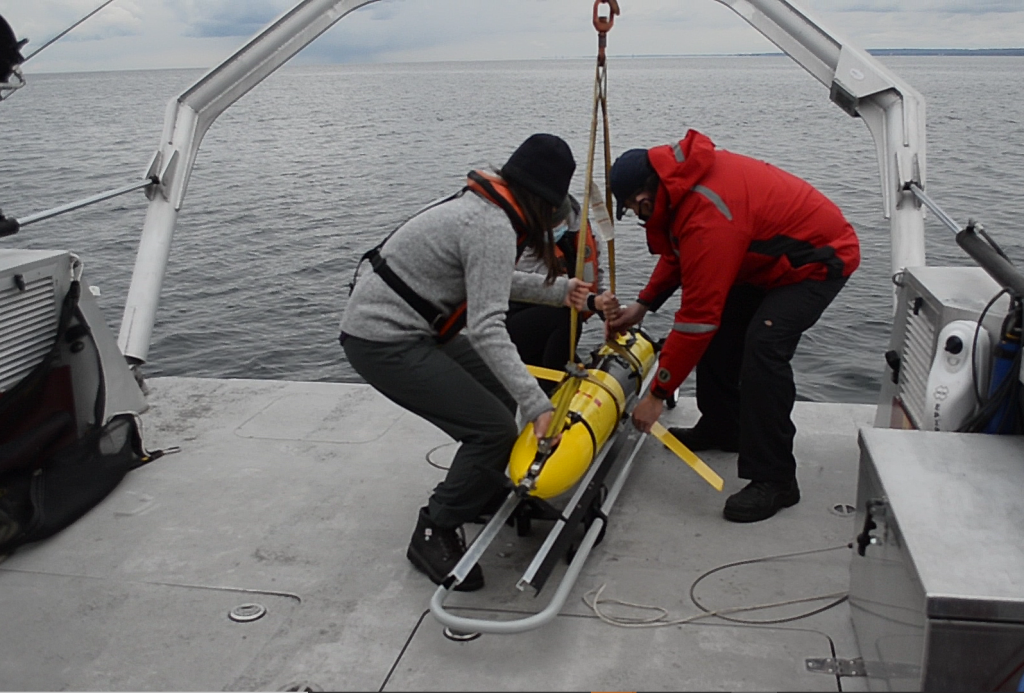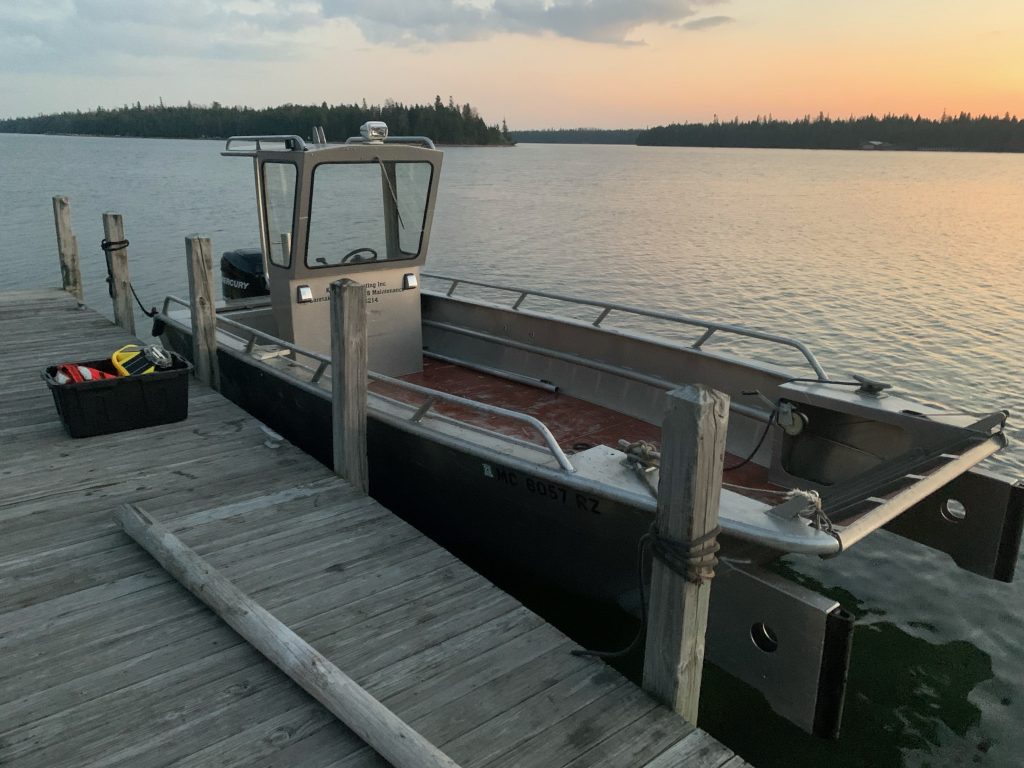With cold weather rolling in and water temperatures dropping, buoy operators across the region have brought most of their buoys and other seasonal platforms back to labs and garages for the winter.
For buoys and other monitoring platforms, this labor-intensive and potentially dangerous process involves cruising out to the mooring, detaching the buoy, hauling it back to port, loading it onto a truck, and driving it back to the lab where the process of cleaning, repairing, and upgrading can begin.

A special thanks to all those who do this work every year to keep data flowing all season long!
We asked a few buoy operators around the observing system “How’d recovery season go?” and here’s what they said:
“The 2021 recovery season, although a great success overall, was bittersweet for us as it marked the final few cruises with our beloved Capt. Geoff Anderson, now retired. His last hoorah with us included an impromptu recovery dive on the ATW20m buoy on a not-so-particularly great weather day. Geoff’s years of experience, wealth of seafaring knowledge, unflappable nature, great sense of humor, and general can-do attitude will be sorely missed.” -Jessica Grow, Associate Researcher and Marine Technician at University of Wisconsin-Milwaukee School of Freshwater Sciences
“We manage approximately 12 buoys on Lakes Superior and Michigan and have so far retrieved 5 of them (all on Lake Superior)…With water temperatures being at record-high levels this fall on Lake Superior, we’ve been trying to leave the buoys in as late as possible in part because the NOAA buoys in western, central, and eastern Lake Superior all came out so early this year (in late October).” -John Lenters, Associate Research Scientist at Michigan Tech.
“The lake is unpredictable in the fall but we persisted and got everything out of the water (seven buoys).” -Katelynn Johnson, Research and Operations Director at RAEON
“We have a very full, very messy high bay right now. All of the equipment is back in the lab and we’re busy archiving data, shipping instruments that need calibration and repair, and planning upgrades and maintenance for all of the buoys and gliders.” -Russ Miller, Observing System Engineer at Cooperative Institute for Great Lakes Research (CIGLR)
“We are all a bit exhausted by this point in the year, but no doubt I’ll be wishing the ice away before I know it. Recovery season requires obsessive weather watching and always having a bag packed for when the window opens. It might blow 25 knots for weeks on end and keep you tied to the dock. Maybe it’s going to snow next week. If you told younger me, dreading a standard engineering career, that this is what my fall would look like – I’d say you were crazy. But I’m glad I don’t have to call you crazy.” -Hayden Henderson at CIGLR




